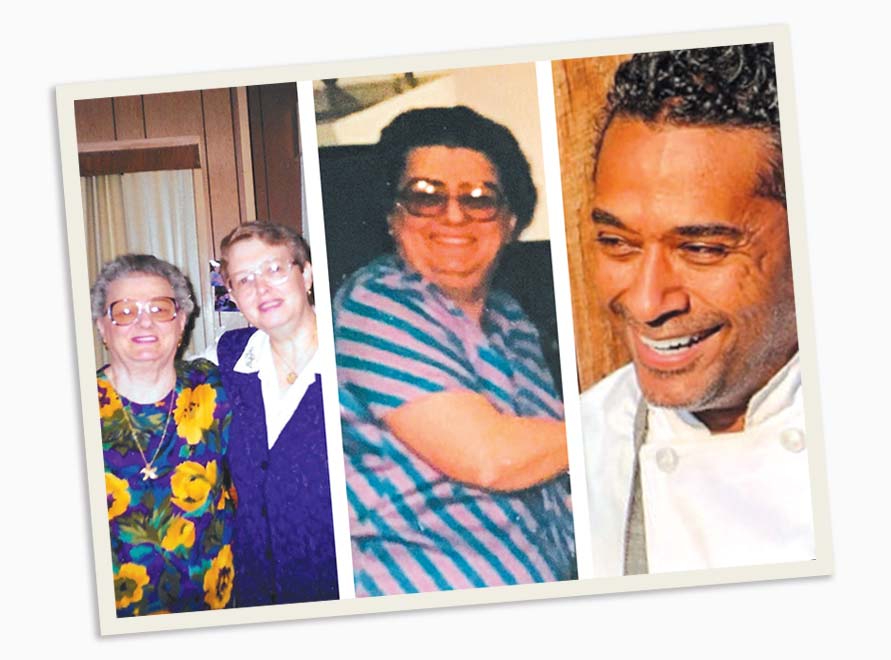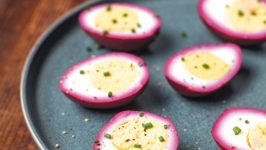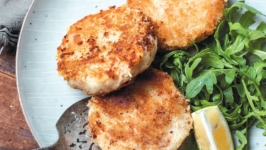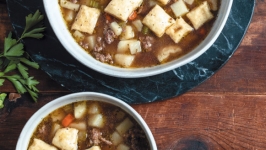Tasting Traditions: Pennsylvania Dutch Heritage
MY MOTHER IS PINTEREST INCARNATE, a woman who was sewing a Pink Panther Halloween costume and teaching me how to make a “rock necklace” by stringing chunks of potato and letting them dry to hard gray lumps two decades before the internet even existed. School projects were no match for her; she helped me build an Egyptian city out of plastic and crochet a replica of a cell. But the woman who figured out how to make mitochondria out of yarn recently revealed that there was one homework assignment she dreaded: Bring a traditional dish from your family’s food heritage to school. “I never felt like we had a food heritage,” she says.
My mom is a solid cook, but she was a product of both the times (the late 70s and early 80s) and our heritage (a mix of English, Irish, and mostly German). Growing up in Bethlehem, the birthplace of MusikFest, it was impossible not to have the occasional German word—or more likely, my family’s mangled version of it—tossed into conversations, but that was as much thought as I ever gave to being Pennsylvania Dutch.
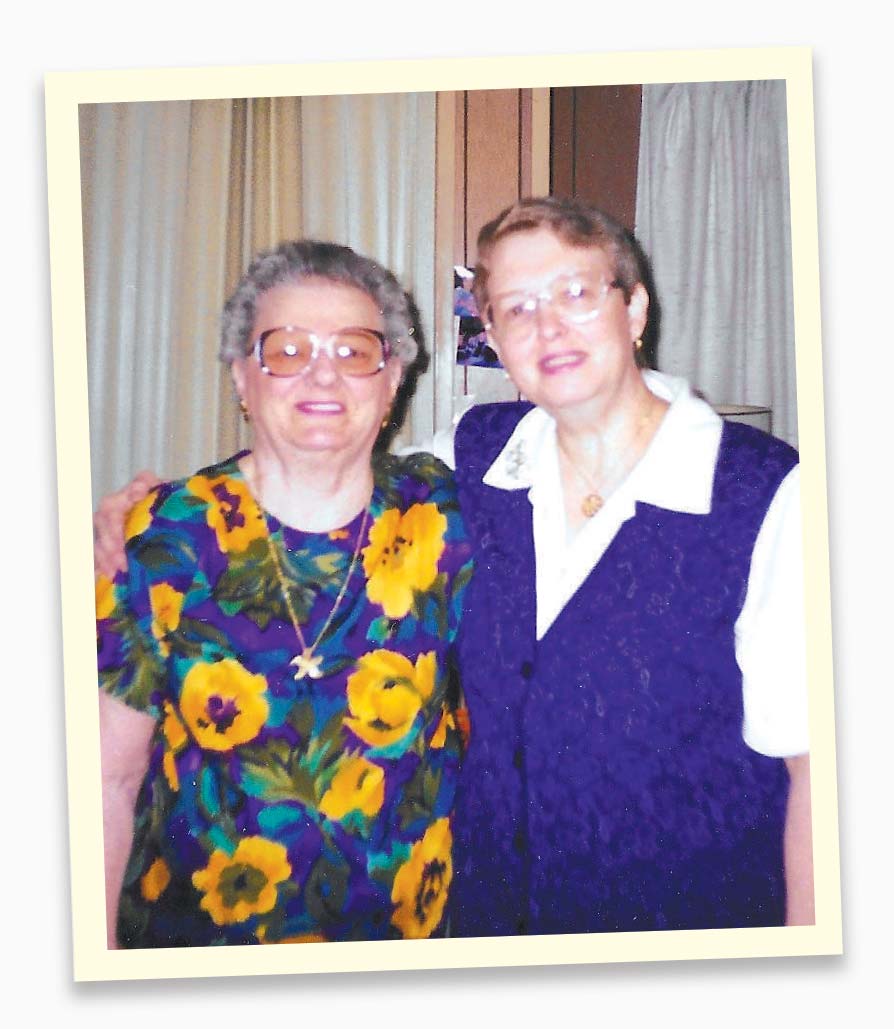
The author’s mother and grandmother.
Amish is, after all, virtually synonymous with “plain”, and that’s exactly how I’d describe the meals of my childhood: bland, starchy, quintessential meat-and-potatoes dishes.
FINDING MY FOOD ROOTS
Certainly the food—dishes that were as bastardized as the language—was nothing to write home about. My hometown was settled by German immigrants and is a stone’s throw from the heart of Amish country. There’s a lot of crossover in culinary traditions, but nothing so exciting you could call it fusion. Amish is, after all, virtually synonymous with “plain,” and that’s exactly how I’d describe the meals of my childhood: bland, starchy, quintessential meat-and-potatoes dishes.
Using pork instead of beef was a daring move, sure to raise alarm among the three picky kids in my family. Recipes copied verbatim off packaged food labels became our family traditions. I was particularly wild for “bacon burger turnovers,” a mix of ground beef, sour cream, bacon and cream of mushroom soup folded into pastry like a muted, spiceless empanada.
My grandmother was a fabulous cook, but not the kind that would ever win on Top Chef. Growing up during the Depression, poor in a large family, she learned to stretch ingredients as far as they would go. She could make the most mouthwatering roast beef out of the cheapest cut in the supermarket, and to this day I still don’t know how she did it. No one does; she didn’t use written recipes or measurements, and asking her how to make something was an exercise in frustration.
As a child who was wary of most vegetables, I turned my nose up at the weird, stinky—but in retrospect, undeniably more flavorful— food my grandmother made: stuffed cabbage rolls cooked in tomato soup (known as halupkies, though my mom and her sister for some reason refer to the dish incorrectly as “pigs in the blanket”), pork chops and sauerkraut, tuna fish cakes made using leftover mashed potatoes. I’d occasionally open our refrigerator to find large mason jars stuffed with hard-boiled eggs dyed a brilliant fuchsia color from being pickled with beet juice, or something my mom called pepper pot soup: potatoes, celery, carrots and ground beef in broth with pale, wrinkly dumplings.
At the time, I didn’t realize that these dishes were, in fact, the ones that reflected our cultural identity. They didn’t seem exotic and alluring the way the flan someone brought to my Spanish class did. You could find the ingredients in any corner store, and the most daring spice was a little dried marjoram.
As my palate and interest in food expanded, my disappointment in these facts deepened. My culinary inheritance seemed insubstantial compared to the others I envied: pad Thai, Indian curries, my Sicilian father-in-law’s crabs in red gravy. Germany seemed like the least interesting region of the world’s culinary map, and I had zero interest in brats or cabbage or even beer. Worse, it seemed like the world agreed with me; as other food trends came and went, from sushi to Peruvian food, no one was ever keen to make schnitzel the next big thing.
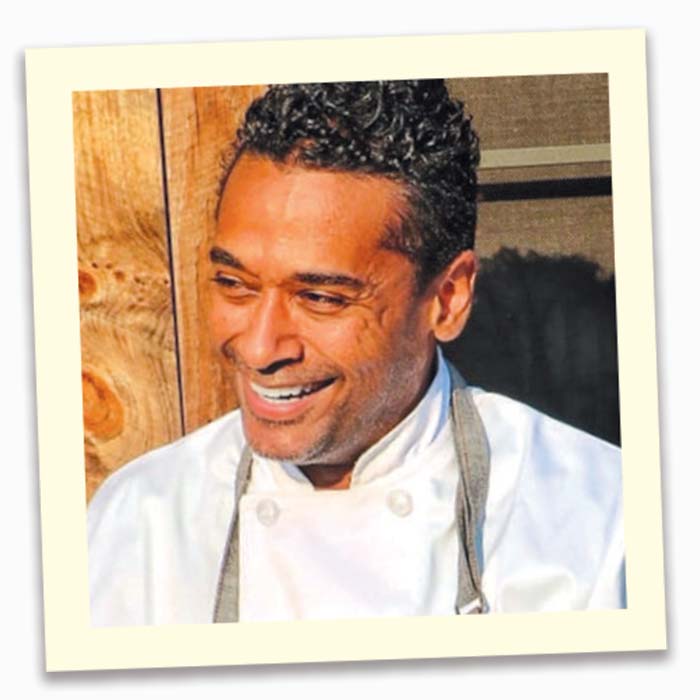
Chef Chris Scott
A CHEF’S TAKE ON PA DUTCH TRADITIONS
So, I was intrigued to learn that Chris Scott, a successful chef, restaurateur, and Coatesville, PA, native, is writing a cookbook, Homage (Chronicle Books, Spring 2022), inspired by his Pennsylvania Dutch heritage. I needed to know what exactly he thought was worth sharing about the food I’d always taken for granted. What richness had I missed in my family’s culinary and cultural traditions? At first, it didn’t seem like much. “A lot of that food, nothing is exceptional as far as flavor is concerned,” Scott told me. “It’s nothing groundbreaking.”
“But at the same time,” he went on, “it’s so delicious.” He likened it to walking down any major city thoroughfare, where you’ll pass dozens of fancy French brasseries, Italian trattorias and sushi bars. “You take a left turn down an alley and discover a really unique kind of cuisine where the food is completely different,” he says. “Amish food is like taking that left turn off the beaten path. You’re in for a pleasant surprise.”
I wasn’t convinced so easily. After all, Scott had another side to his culinary heritage, one that is better known for food. After the slaves were freed, he said, his family settled in Rappahannock County, Virginia. His great-grandfather was the only sibling to move north. “By the time I came about,” Scott said, “those two cultures, Southern and Pennsylvania Dutch, were already deeply rooted and intertwined.”
He went on to win acclaim with his Brooklyn soul food restaurant, Butterfunk Kitchen, where his lemonade-brined fried chicken drew lines around the block. I was surprised to hear him say that this twist on southern tradition was inspired directly by his Pennsylvania Dutch upbringing and the popularity of lemonade in Amish communities. “When people think about Southern food, they always go to fried chicken or ribs,” Scott said. “But the real foundation of a lot of Southern food is the same as it is for Pennsylvania Dutch food. It’s all based in agriculture.”
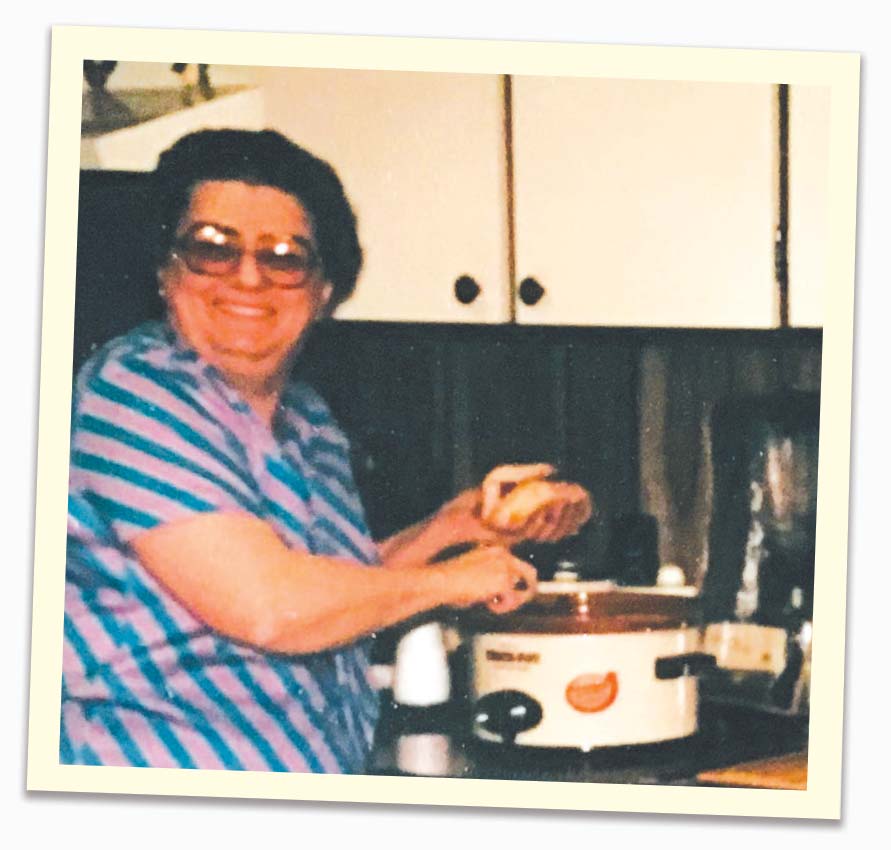
The author’s grandmother in the kitchen.
“But the real foundation of a lot of Southern food is the same as it is for Pennsylvania Dutch food. It’s all based in agriculture.”
THE ULTIMATE COMFORT FOODS
In both cases, these communities were poor without a lot of resources, so they ate off the land. “If they had an animal, they ate every part of the animal,” Scott said—a valid explanation for the PA Dutch delicacy known as scrapple, as well as sausage making, which Scott calls “low-country charcuterie.” Because it was a stable and staple crop, the humble potato was pressed into service in as many ways as possible: bread, soup, dumplings, etc. Things were preserved and pickled, including chow chow, the PA Dutch vegetable relish that’s used as an all-purpose condiment. In his restaurant, Scott reinvented the preserved tomatoes, peaches and Concord grapes his grandmother used as toppings for cheesecakes.
“When I started pursuing culinary as a life,” he recalled, “just like any other chef, I was drawn into the major lanes, French and Italian. But whatever you grew up on kind of sidesteps that. When you’re well-established in your foundation of cooking, some of us come back home to what we know. For me, it was Southern and Pennsylvania Dutch food.
Once he learned to sear and sauté and flambé in professional kitchens, Scott returned to his grandmother’s house, where the only rule was to make food taste good. So, he came up with a homemade scrapple sandwich topped with a fried egg and served on a potato roll with okra chow chow and smoked maple syrup.
He estimates that three-quarters of the recipes in Homage are family recipes. “The bread baking, desserts, certain ingredients— all the essential flavors are things I remember as a young child, but I didn’t appreciate the technique until much later in life.”
Scott describes one of his all-time favorite dishes, his grandmother’s fried potatoes with onions, and how making it the way she did still eludes him. It reminds me of the potatoes my own grandmother used to make in a skillet on the stove, cut in a way I’ve never been able to replicate. They were simple, yes, but there is nothing else like them in the entire world. “That particular dish screams volumes about her love for family and cooking,” Scott says of his grandmother, and I’m nodding.
My grandmother didn’t live to see my interest in food flourish to a point where I wanted to learn what she could teach me, and she didn’t leave any recipes behind. But my mom has described her technique for pepper pot stew, how she rolled out the dough for the dumplings, cut them with a pizza cutter, and dumped them in the soup to cook, working at top speed so the potatoes were done just right. I don’t have any measurements, just a list of ingredients— ones that sound pretty bland to me. But I think it’s enough.


